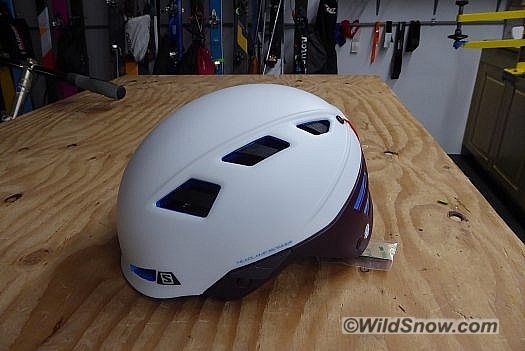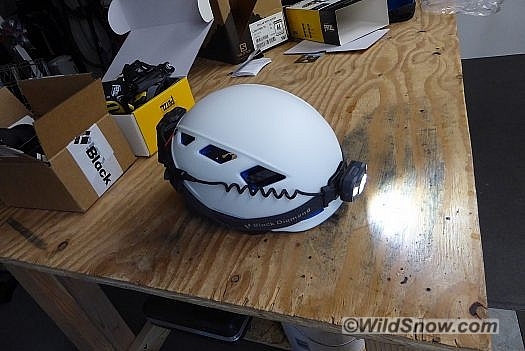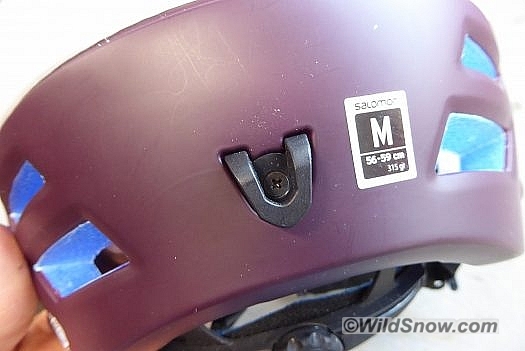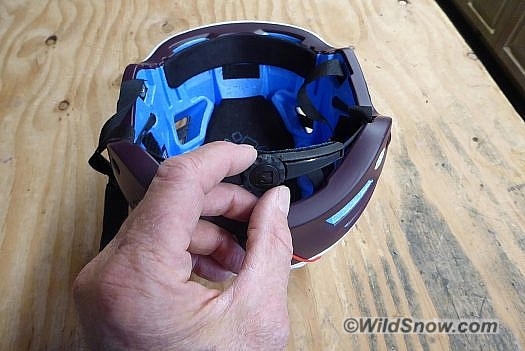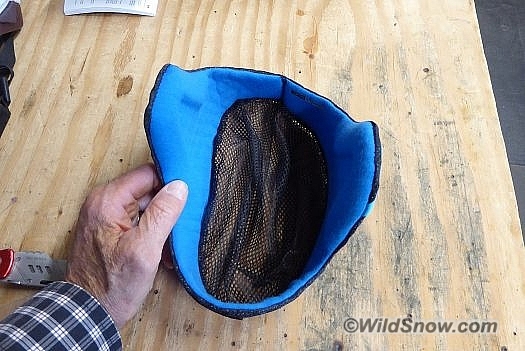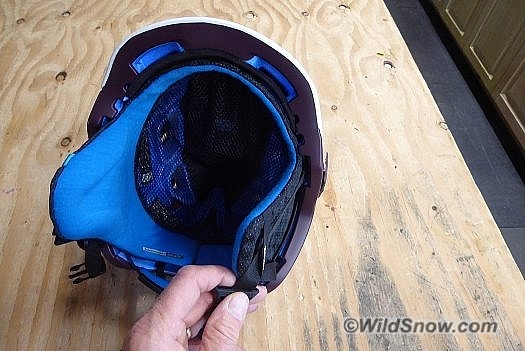Update: I added info about warm weather liner, and a few other edits. See bottom of post for the liner, it’s nice, minimalist!
As many of you know, I’m not particularly impressed with the protection ski helmets offer. The sometimes vaunted manufacturing standards are really quite minimal — they could be stricter, with more attention to the danger of concussion from repeated lower energy impacts (not to mention more protection in general).
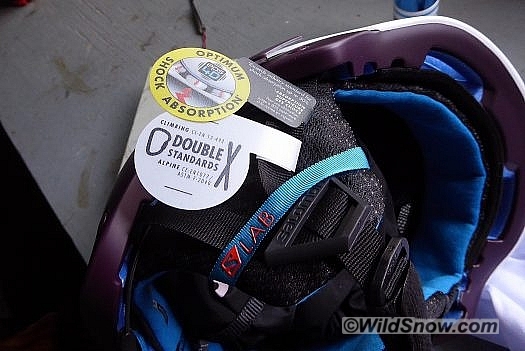
Helmets need to *absorb* force, not distribute it. While I have no idea where or how Salomon backs up their claim of “Exceeds industry standard shock absorption up to 30%,” at least they got the terminology right. The double standards hang tag is visible in this photo as well.
Distrust of actual protection notwithstanding, I found myself last winter wishing I was wearing a skull shell during our night tours. If for no other reason than as a headlamp mount, but also considering we did have a few skitters on glazed snow. Speaking of which, I had an embarrassing little incident while skinning on an ice glazed 30 degree moderate ski run — a sliding fall could have put me into a tree. I wasn’t moving downhill fast, but could not stop. Terrifying. Consumer type (Category B, see below) ski helmets are not known to significantly protect you from high speed impacts, but a glancing blow to an aspen tree during a low speed slide is exactly what they could help with. So folks, I’ll be experimenting with wearing one more frequently than before, on the up as well as down.
(Note: This is a first look, long term testing has commenced.)
Asking around among my hardcore mountaineering friends, I got good reports on the Salomon MTN Lab helm. Designed specifically for ski touring, this helmet is reasonably ventilated, light at 372 grams. My tester is white. With helmets, heat is often the enemy. That especially true for cardio uphilling and spring ski touring. No sense stoking the furnace with dark color sun absorption. On the other hand, a darker colored helmet might be on the agenda for winter, as a white helmet in avalanche terrain could be a strike against a quick rescue.
Configured for summer without ear flaps, I’ll even try the Salomon for road bike riding (it would clearly be too hot for grinding out mountain bike hill climbs, despite its MTN moniker).
Headlamp compatibility
You can configure the MTN helmet to somewhat hold a headlamp using the rear goggle retainer and two headlamp dedicated clips on the sides. Nonetheless, as with many other helmets I found the MTN’s headlamp retainer configuration to be inadequate. Duct tape will clearly come into play with any sort of serious headlamp use. I’m also considering mounting the Petzl headlamp optional mounting brackets on the helmet, to eliminate the pesky straps. More on that as things progress, as a helmet is useless to me without an excellent lamp attached. https://www.backcountry.com/petzl-duo-mount
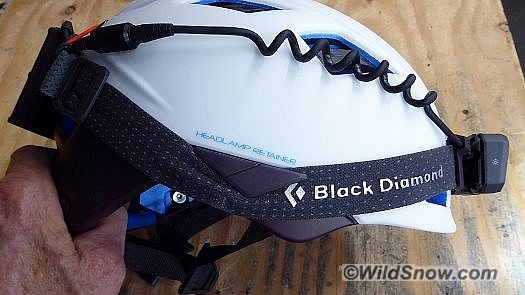
The headlamp retainer clips are a step in the right direction. But they still allowed the lamp to ride up on the slick shell if bumped. Perhaps a situation for hook-loop, or better, The Petzl Duo Z2 we’re also testing has available helmet mounts with peel-and-stick.
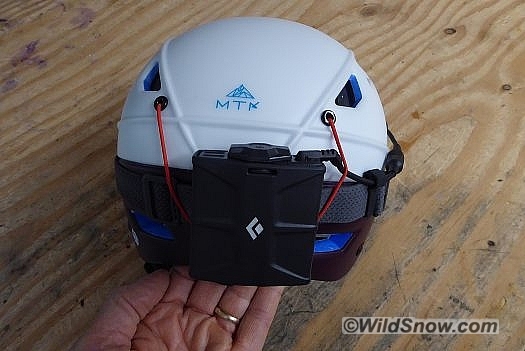
Goggle retainer also holds battery pack. As is often the case, we had trouble running both goggles and headlamp at the same time. We’ll cover that more in a our headlamp reviews, on tap.
Goggle compatibility
I’d prefer the front brim of the shell was about 4 millimeters higher. Depending on goggle brand and model, during dry runs at home I sometimes didn’t have enough room for the top of my goggles.
Fit
For my head shape, the fit is a bit wide left to right while snug front and back. Most of this gets adjusted by the soft headband-liner, but a more sophisticated shaping system could be good. In any case, the typical knob-crank circumference adjustment does most of what I need, changing from bare head fit to slightly larger for balaclava. I chose a shell size that’s snug, a ski cap or ball cap won’t fit inside. That’s by intent. I find helmets to usually be warm enough in of themselves, and if necessary I’ll cover with a compatible hood.
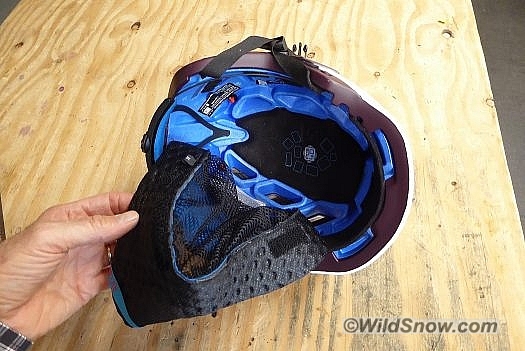
Liner is easily removed for washing or swapping. Apparently they’ll begin retailing a summer liner at some point, same thing only without ear flaps. Easy liner changes are another essential for me. Changing out for a dry liner when transitioning from uphill to down is ideal.
Shell
This is a hard shell helmet. It is thus a few grams heavier than a full-foam helmet with eggshell skin, but much more durable for events such as being packed in a ski bag, flying to Europe snuggled with a ski binding. It bears repeating that a hard shell offers no more impact protection than a soft shell (possibly even less), it is simply there to guard against intrusion (punji branches and sharp rocks), as well as being a solid means for attaching headlamp mounts, goggle attachments, chin straps and so on.
Liner
The combined headband and earflaps peice is easily removable (word is a summer version will be available without flaps). A combination of Merino Wool and super breathable fabrics help manage the deluge.
Venting
Average, meaning enough to do something but not enough to let in tons of snow. The vents have no closure system, for wet or extreme cold weather you’d want to tape them shut. This could be done with white duct tape applied to the outside.
Protection
This is not a MIPS (rotation damping) helmet. That’s by intent as we’re clearly after something minimal (MIPS adds volume and weight). Likewise, this is not an “EN 1077 Class A” snowsports helmet, but rather a “Class B,” meaning it indeed offers less protection, but is equal in protection to most of the ski helmets you see folks using. Why not a Class A for ski touring? The shell of a class A covers the ears (think an alpine racing helmet), it’s heavier, and has smaller or no vent holes. Compromise. At least Salomon is up front about what standards the MTN Lab conforms to, stated on a clearly worded sticker inside the shell. Mountaineers, note the MTN also conforms to the EN 12492 standard for climbing helmets. That’s excellent in terms of multi-purpose.
Overall impressions
A lightweight nicely designed helmet. A few more fitting pad options would be appreciated, e.g., the summer liner without ear flaps. Headlamp and goggle retention are not ignored, but I’d have expected Salomon to do better. Overall, recommended.
More photos:
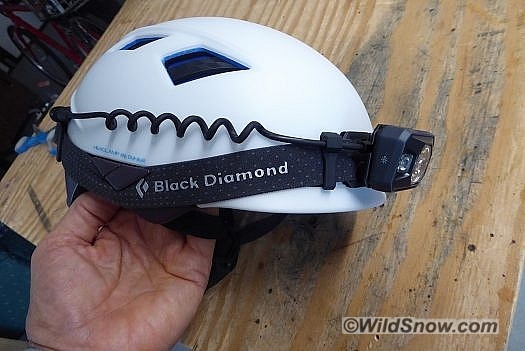
Headlamp mounted using the retainers. I found the lamp would still easily slip upward on the helmet forehead, perhaps because the retainers would be better located farther forward. Tape would be the solution. Nothing new about that.
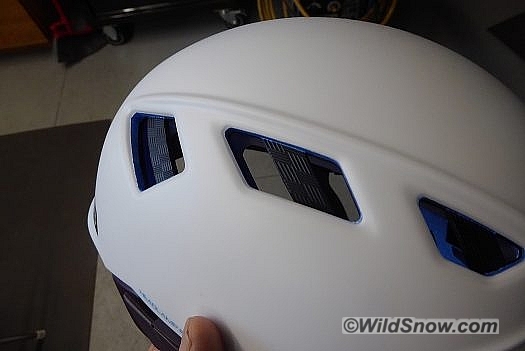
Intrusion protection is specified in the helmet standards. Getting punjied in the head is a very real occurrence. I once got a pretty good scalp slice from a branch, which a helmet would have entirely prevented. A better type of intrusion protection might be a strong aluminum mesh rather than the composite bars visible in the photo, but that’s a quibble.
ADDENDUM — THE SUMMER LINER
Apparently they’re not importing the “summer” MTN helmet liner to North America, but they’re available in Europe. I acquired and checked out. Nice. Pretty much what I’d use for any ski tour, as helmet ear flaps are usually overkill. Photos follow.
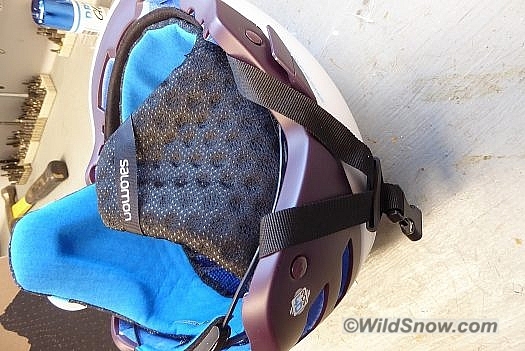
Removing the ear flap liner takes seconds. Most of the fiddling involves threading the chin strap yokes through their retainer loops on the ski helmet.
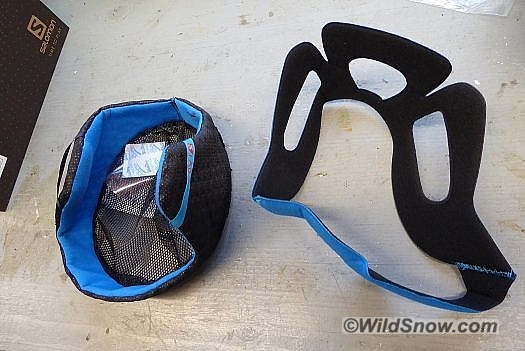
Salomon winter liner to left, minimalist liner to right. At first I thought, what the heck, how can this be comfortable? But they got it right. Feels fine on my noggin.
WildSnow.com publisher emeritus and founder Lou (Louis Dawson) has a 50+ years career in climbing, backcountry skiing and ski mountaineering. He was the first person in history to ski down all 54 Colorado 14,000-foot peaks, has authored numerous books about about backcountry skiing, and has skied from the summit of Denali in Alaska, North America’s highest mountain.

